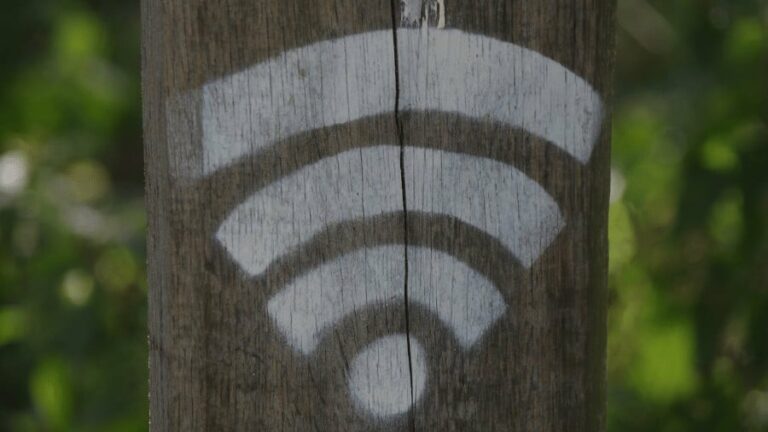What Is The Range Of A Trail Camera?
Different kinds of trail cameras come with different unique characteristics that make them outstanding. The motion sensors of the best trail cameras can detect targets from far away and automatically trigger the shutters which then capture images or record videos. The question we wish to answer is: What is the range of a trail camera?
A trail camera can detect movements as far as 50 to 100 feet away but, this depends on the particular type of trail camera and the price. High-priced trail cameras have the ability to detect motion farther than low-priced ones.
The best trail cameras are those that can detect motion as far as 80 to 100 feet and have wide-angle coverage. In the rest of this article, we will provide you with interesting and valuable information about trail camera ranges as it relates to their prices. So, ride along!

We will begin by telling you about the different types of trail cameras so you can understand this article better. There are different types of trail cameras that can give you a very good result while securing your home or exploring the outdoors. There are many of them but the ones that will be listed here are the best-known trail cameras with the best detection range.
- The Motion-Activated Trail Camera
These are the best trail cameras for outdoor activities. The top motion-activated trail camera has wide range detection and can detect motion from a far distance. The above is a result of the presence of the “built-in motion sensor” since the activities especially in the wild cannot be predicted. Most of the motion-activated trail cameras are built to have high sensitivity to quickly detect and track movements in the wild and take the videos of any detected.
Here are a few advantages and disadvantages of the motion-activated camera
| Advantages | Disadvantages |
| It is installed in a setup which makes it dangerous for human presence. | The short-ranged camera is less sensitive and detection might not occur. |
| It detects motion within its range. |
Check out a collection of motion-activated trail cameras on Amazon
The name “cellular” implies that these cameras use a SIM card which is used to connect to other cellular devices like the cell phone. These kinds of trail cameras save you the stress of going to the wild to examine the videos and pictures and send them to your phone, it also saves you the cost. The cellular trail camera captures footage and connects it to your device through a cellular network. This allows you to access the activities of the wild without being present there through any of your cellular devices connected to the camera. However, when placed in a low-network area, it might result in poor coverage. The contents can as well still be extracted but it has to be done manually this time because it cannot be transmitted due to the poor network condition in the area.
Here are some advantages and disadvantages to this camera.
| Advantages | Disadvantages |
| They come in compact sizes. | It runs low on battery mostly. |
| They are very portable. | SIM needs an available network to function. |
Check out a collection of cellular trail cameras on Amazon
- The Wireless Trail Camera
As the name implies “wireless” just like the previous type, they transfer footage through a “WI-FI” network. It is an already established fact that this particular type of trail camera is the best. A wireless trail camera has transmitters that allow it to connect to a lot of other devices in a wild open area. This kind of trail camera functions best in places with WI-FI access. However, in places with no WI-FI access, the transmission process is affected. Aside from the fact that one can find oneself in an area without WI-FI access, this has proven to be the best kind of trail camera. The above problem could be averted if a little extra measure is taken by purchasing a concealed portable WI-FI kit to ensure that there is network coverage.
Here are some advantages and disadvantages of the wireless trail camera:
| Advantages | Disadvantages |
| Easy installation process. | Lack of WI-FI disrupts transmission. |
| Easy sharing of pictures. | The exposed environment can hamper the WI-FI signals. |
Check out a collection of Wireless trail cameras on Amazon
- The Infrared Trail Camera
These types of trail cameras have proven to be best suitable for night coverage.
The infrared trail camera possesses a low glow to capture motions and images in dark places. In some infrared trail cameras, the images are not always colored. Some good infrared trail cameras have infrared LEDs and automatic control capabilities. These cameras have high resolution and capture night images clearly. The infrared trail cameras also come with fitted sensors that switch the infrared function on and off.
Here are some advantages and disadvantages of the infrared trail camera:
| Advantages | Disadvantages |
| They are easily installed | It is very costly |
| They are sturdy and can withstand tampering | The light reflection is limited owing to the LED light on it |
Check out a collection of Infra-red trail cameras on Amazon
- The Security Trail Camera
As the name implies, it is used for mainly security purposes. If you have ever felt the need to track the activities going on in your absence at home, at your business establishment, office space, or store room, then you need a full enabled trail security camera. It is absolutely authentic as it records activities in real time and provides accurate details of the activities recorded. The footage of the camera could later be used as evidence if need be. The security trail camera is mostly mounted in crime scenes, to detect any suspicious activity.
Here are some advantages and disadvantages of the security trail camera:
| Advantages | Disadvantages |
| It gives a comforting sense of security. | It is not very potent in the wilderness. |
| It can also help monitor the wildlife around you. | It is often wanted by hoodlums because of its implicating duty. |
Check out a collection of security trail cameras on Amazon
RANGES OF TRAIL CAMERAS
Do the prices of the trail cameras affect their quality? The answer is yes. Remember “range detection” is one of the qualities of a trail camera. The higher the price of the camera, the more quality the camera is which includes high range detection. The detection range is referred to as the maximum range at which a camera is able to detect motion and trigger a photo. Here, we will look at the range of prices of the trail cameras and also, the ranges of distance and speed.
There are three major categories of the trail camera pricing which affect their range detections. They include:
- $30-$60:
This particular range has a lot of wild range options in it. The cameras at this price range can take simple pictures pictures and videos and have image resolution attaining the limit of “eight megapixels” the detection range of the cameras in this category usually varies. They can reach up to 50 feet. The cameras also have an intensive speed of around one second.
Check out a collection of trail cameras between $30-$60 on Amazon
- $70-$100:
The trail cameras under this category are considered to be “mid-ranged” although they deliver commendable results. The speed range of the cameras within this category is between 0.7 to 0.9 seconds, with the image sensor of 16MP which makes them take clear photos and presentable video even in dim light. The cameras in this category can detect a distance from 50 to 80 feet.
Check out a collection of trail cameras between $70-$100 on Amazon
- $200-$300:
The cameras in this category are for outdoor trackers and hunters/animal watchers do not mind getting a high-quality camera because of the nature of what they do and the result they are expecting. Cameras in this price category have very fast trigger speeds not only that, but they are also able to detect movements from a distance of 80-100 feet. They cover a wide landscape providing quality pictures and videos. They also have long-lasting batteries; so, cameras within this category last longer, detect faster, and have more speed than cameras in other lower prices category.
Check out a collection of trail cameras between $200-$300 on Amazon
It is important to note that in determining the range in which a trail camera can detect motion, there is a relationship between the differential indices of the target’s body heat relative to the temperature of the surrounding grounds also known as ambient temperature. This means that the overall detection range is usually affected by air temperature. For instance, a camera’s detection range could be greater on a 32 degree winter day as compared to a 90 degree summer day.
Trail cameras are just like the telephones; the most expensive telephones have great distinctive features that make them more outstanding than the cheaper ones. One of the things that make a product highly expensive is the quality of that product. So, if you want a trail camera with a high detection range then you need to up your budget.






